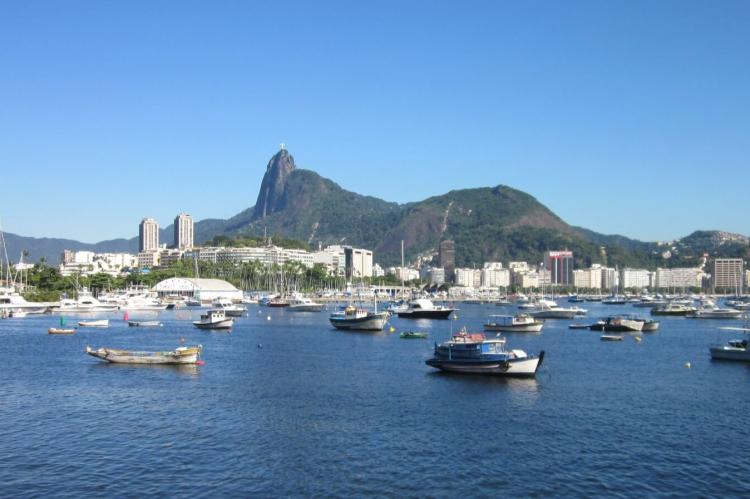Guanabara Bay (Brazil)
Guanabara Bay is a picturesque bay of the Atlantic Ocean, located in southeast Brazil, in the state of Rio de Janeiro. On its western shore lies the cities of Rio de Janeiro and Duque de Caxias, and on its eastern coast, the towns of Niterói and São Gonçalo. More than 130 islands dot the bay.
Guanabara Bay
Guanabara Bay is a picturesque bay of the Atlantic Ocean, located in southeast Brazil, in Rio de Janeiro. When Europeans first discovered the bay in 1502, it was originally named Rio de Janeiro Bay.
Guanabara Bay is the second largest bay in Brazil, after Todos os Santos Bay. By sheer volume, the bay's depth makes it not only the deepest natural bay in Brazil but the deepest in the world. More than 130 islands dot the bay, including Villegagnon, Governador, and Cobras.
The Serra do Mar mountain range rims the bay's edge and continues 1,500 km (932 mi) along the coast of Rio de Janeiro. It covers 412 sq km (159 sq mi), with a perimeter of 143 km (89 mi). Its 1.6 km- (1 mi-) wide entrance is flanked on the east by Papagaio Peak and Santa Cruz fortress and on the west by Sugar Loaf Mountain and São João fortress.
On its western shore lies the cities of Rio de Janeiro and Duque de Caxias, and on its eastern coast, the towns of Niterói and São Gonçalo. Four other municipalities surround the bay. The 13.29 km- (8.26 mi-) long Rio-Niterói Bridge crosses Guanabara Bay, connecting the cities of Rio de Janeiro and Niterói. A maze of smaller bridges interconnects the two largest islands, Fundão and Governador, to the mainland.
The Port of Rio de Janeiro and the city's two airports, Galeão - Antônio Carlos Jobim International Airport (on Governador Island) and Santos Dumont Airport (on reclaimed land next to downtown Rio) are located on Guanabara Bay's shores. The Federal University of Rio de Janeiro's main campus is on the artificial Fundão Island.
Ecosystem
Guanabara Bay's once rich and diversified ecosystem has suffered extensive damage in recent decades, particularly along its mangrove areas. The bay has been heavily impacted by urbanization, deforestation, and pollution of its waters with sewage, garbage, and oil spills.
The marine ecosystem of Guanabara Bay has been severely damaged. The bay was once a whaling ground, but today, whales are no longer or rarely seen, while Bryde's whales can be seen around the bay entrance. The bay is also home to a botos (dolphins) population, which faces severe risks of population decline.
![Guanabara Bay (Brazil) by Zimbres [CC BY-SA 3.0 (https://creativecommons.org/licenses/by-sa/3.0)] Guanabara Bay (Brazil)](/sites/default/files/styles/large/public/guanabara_bay_brazil_opt%20%281%29.jpg?itok=VS5UDgdK)




